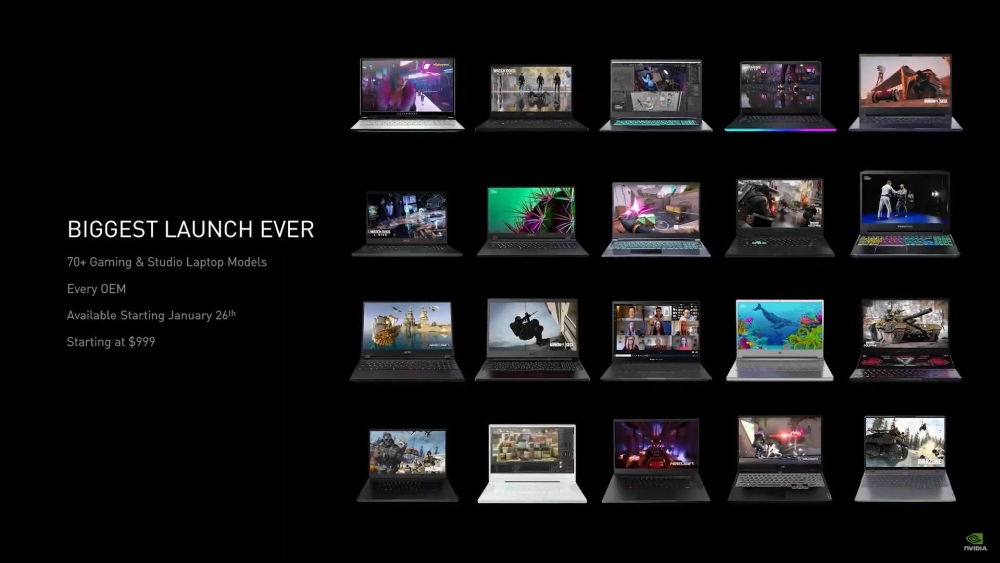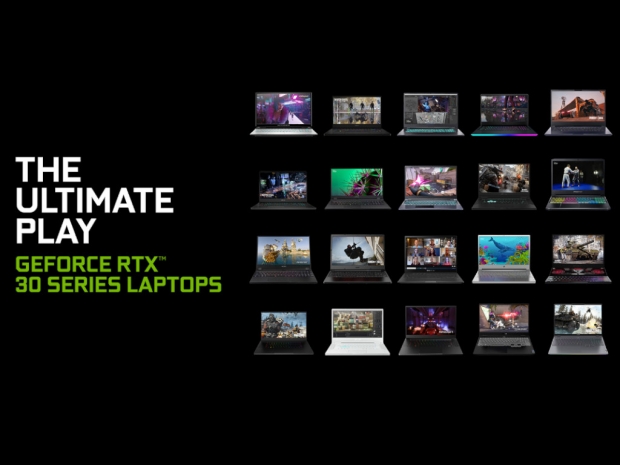Although different from their desktop counterparts, the Geforce RTX 30 series for laptops promises significant performance improvements while maintaining the sub-150W design which is a must in a standard laptop design.
GA106 and GA104 GPUs to lead the way
While Nvidia did not specifically announce the actual GPUs, the specifications reveal that the Geforce RTX 30 series for laptops will mostly be based on GA104 and the new GA106 GPUs, as well as support for Resizable BAR, at least on Intel's new Tiger Lake-H35 CPUs.
The flagship RTX 3080 Laptop GPU will be based on a fully-enabled GA104 GPU with 48 SMs, or a total of 6144 CUDA cores, paired up with 8GB or 16GB of GDDR6 memory on a 256-bit memory interface. With TGP ranging from 80W to 150W TDP, the clock is set anywhere between 1245MHz and 1710MHz, leaving a lot of room for OEM partners to fit their own design and power envelope.
According to Nvidia, the RTX 3080 Laptop GPU will power the "world's fastest laptops" and should provide over 100 FPS at Ultra 1440p resolution in most games.
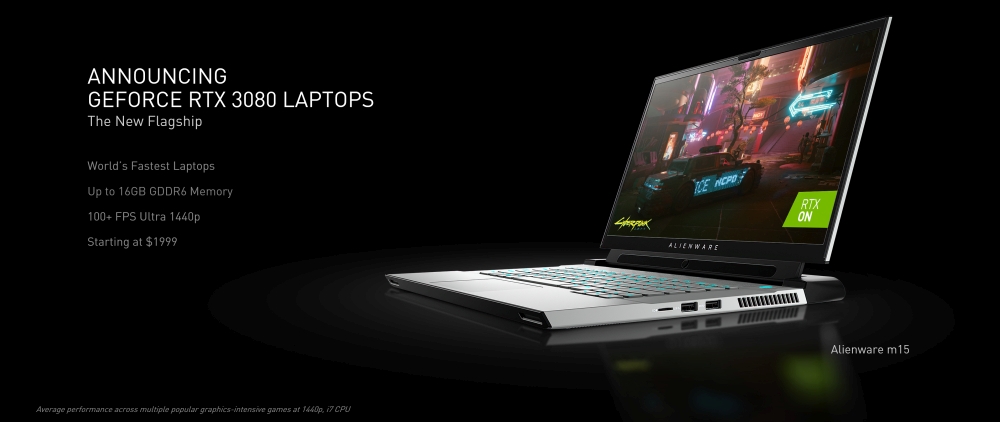
The RTX 3070 Laptop GPU should also be based on the GA104 GPU, but with 40 SMs, or a total of 5120 CUDA cores. Nvidia is limiting the RTX 3070 Laptop GPU to 8GB of GDDR6 memory on a 256-bit memory interface. It has an 80W to 125W TGP with a GPU clock ranging from 1290MHz to 1620MHz.
The RTX 3070 Laptop GPU hits a rather neat sweet spot, as it will also cover the 1440p gaming laptop market, and is according to Nvidia, up to 1.5x faster than RTX 2070. It should provide 90 FPS at Ultra 1440p in some games.
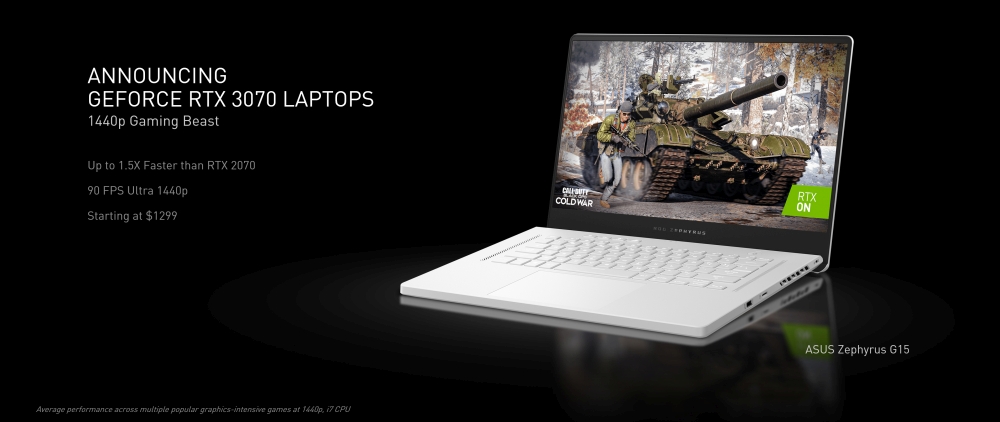
The Geforce RTX 3060 Laptop GPU is most likely based on the new GA106 GPU, just like the RTX 3060 desktop GPU. It packs 3840 CUDA cores and comes with 6GB of GDDR6 memory on a 192-bit memory interface. The GPU clock ranges from 1283MHz to 1703MHz with TGP set at 60W to 115W. These laptops offer 1.3x the performance of Playstation 5, which is a rather surprising comparison, and should be enough to push 90 FPS at Ultra 1080p.
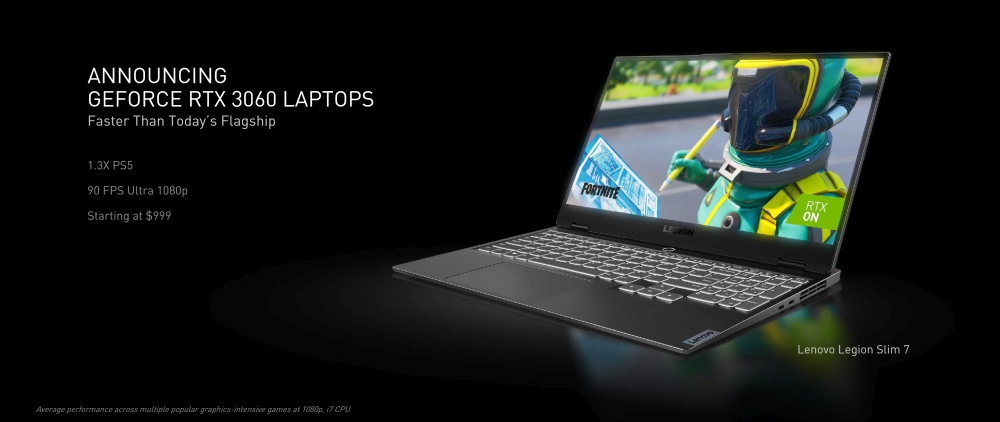
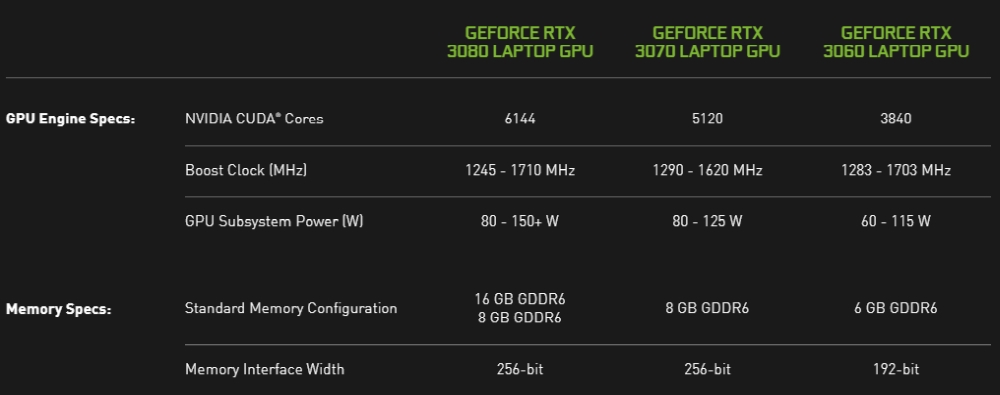
Third generation Max-Q to bring significant improvements
Nvidia has also detailed its 3rd generation Max-Q technology, and although some of the features are listed as a part of the "power by AI" 3rd generation Max-Q technology, those will also most likely be available with non-Max-Q laptops as well.
The list includes the new Dynamic Boost 2.0, Whispermode 2.0, Resizable BAR, and DLSS.
The Dynamic Boost feature has been introduced before, and the new version handles not only the laptop GPU and the CPU but the GPU VRAM as well, which means that Nvidia will be able to drop the power consumption significantly in those laptops.
The Whisperboost 2.0 is Nvidia's noise optimization technology which, according to what we gathered, can lower performance and image quality in games in order to deal with the noise coming from the laptop cooler.
The 3rd Gen Max-Q also brings DLSS support as well as the PCIe Resizable BAR support.
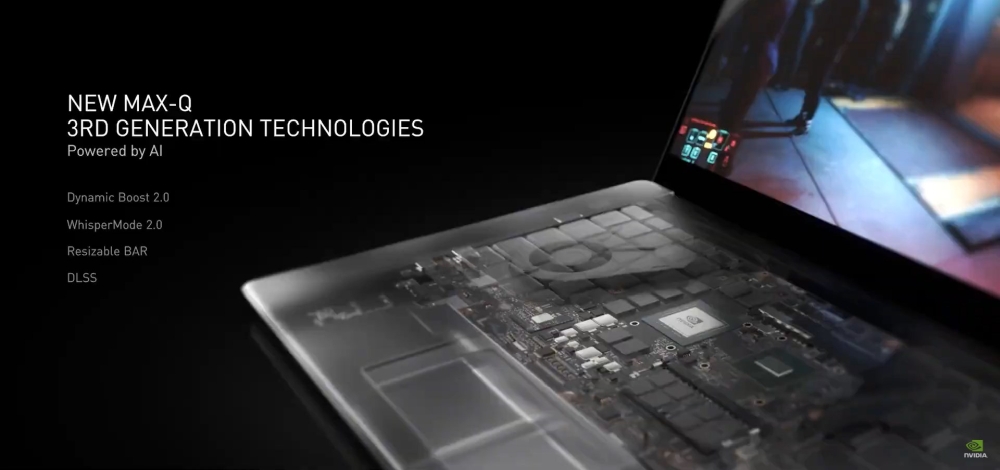
The Nvidia Geforce RTX 30 series for laptops looks great on paper and some of the first OEM designs have already been announced, with new ASUS ROG Zephyrus G15, new Alienware m15, Acer Predator, and more.
Nvidia has managed to raise both the performance and claims we are looking at 2x the efficiency, teasing some performance figures in games like Control, Minecraft, and Borderlands 3.
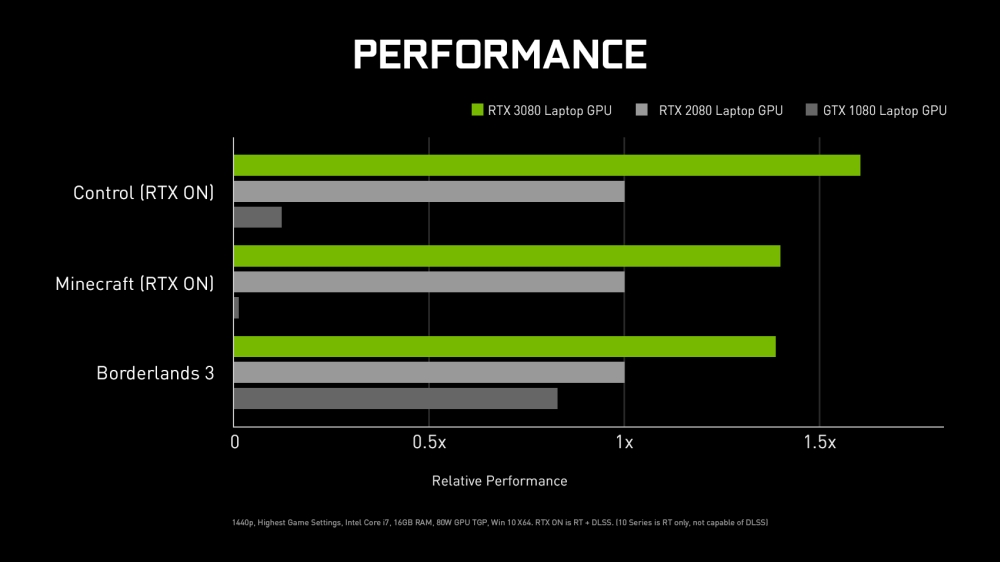
The RTX 30 series for laptops GPUs should be coming as of January 26th, with laptops starting at $1999 for the ones with RTX 3080 Laptop GPU, $1299 for the ones with RTX 3070 Laptop GPU, and $999 for the ones with RTX 3060 Laptop GPU.
